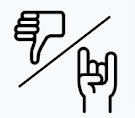Culture Goals
- Students learn that their opinion matters.
- Get kids familiar with their classmates' likes and dislikes.
- Students learn to listen to and respect the views of classmates.
Academic Goals
- Students practice providing multiple correct answers.
- Students are challenged to provide deeper answers.
- Students learn to base answers on evidence, in this case, their own feelings.
Teacher Big Ideas
- Use this activity to get to know your class.
- Practice attention-getting signals.
- Keep it fun by keeping it fast, about twenty items in thirty minutes with a quick pace.
- Allow students to respond to one another as long as they are good sports.
Prepare for the Activity
homework - iPads - dodgeball - friend drama - ungraded papers - friends - teachers - rules - bullies - school projects - lunchtime - tech that doesn't work - missing assignments - missing the bus - people who yell - math - project partners who don't do their share of the work - backpacks - working alone - Chromebooks - writing - detention - little brothers and sisters - seeing the principal - reading a book - recess
Instructions
Step 2: Indicate one side of the room as being "lame" and one side as "rocks."
Step 3: Explain to the students that they will physically move to the sides of the room to indicate their preference.
Step 4: Call on two to five students to give their reasons for choosing the way they did in the form of a quick statement. Avoid long dissertations, as other students will quickly become bored.
Step 5: Move to the next topic and repeat!
Step 6: Keep the pace moving so kids won't get restless.
Key Points to Remember
- This can't be emphasized enough: Keep the pace fast. Teach and use signals to bring students attention back to you so the activity can move forward.
- Be aware--at all times--of opportunities to develop a positive culture in your classroom.
- After the activity, when you have a few minutes of quiet, take note of your impressions and insights into your students.
Adapting for Littles
- This activity is appropriate for students of all ages. For younger students, be prepared to help them understand the concept of standing on a continuum based on their preferences. Start with something very concrete for the students, such as "peanut butter and jelly sandwiches" or an especially divisive topic such as "eating peas."
- The greatest challenge will be helping young students understand that their vote counts for them and to not just go along with the crowd.
- Teach them to raise their hands to share why they made the choice. "I chose ____ because ___." Be patient with rambling stories--that's just what littles do!
See the slide deck below for detailed instructions and feel free to make a copy of the template.
